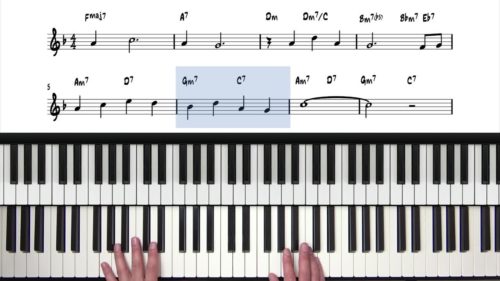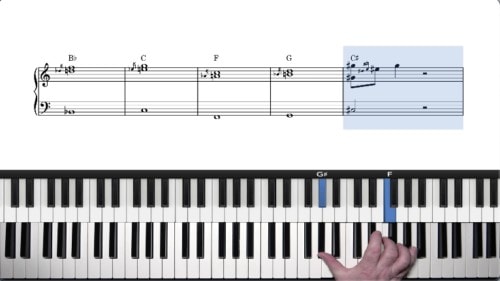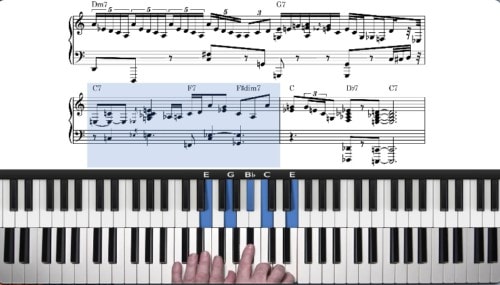Blues Scale Licks & Embellishment
In this lesson we introduce blues scale based melodic material that can be applied to the tune “Misty”. Most of the harmony in the tune is diatonic to the key of Eb Major and so a logical blues scale to use is the Eb Major Blues Scale which contains the same notes as the C Minor Blues Scale.
Dissonance & Consonance
We start by playing the blues scale over each chord in the A Section to identify which notes are consonant with the underlying harmony, and which notes clash.
The clashes can be used to great effect but this creates tension which can be released by accentuating, repeating, and resting on the blues tone scales which are consonant with the underlying harmony.
How To Play The Blues Scale Like A Pro
Once we have identified the best places to apply the blues scale, we dive deeper into the following techniques and principles to achieve an authentic sound when using the blues scale:
- Crushed Notes & Octaves
- Neighbouring Blues Scales
- Blues Scale Walk-ups & Chromaticism
- Cliché New Orleans Style Blues Lick
- New Orleans Style Voicings
- Developing Motifs
Finally, understand that using blues scale fragments is just one tool in our toolbox of improvisational techniques and this should be intertwined with the other topics that we have covered in this module.
Lesson Downloads
-
Blues Scale Licks & Improv File Type: pdf
Practice Tips
-
Analyse the blues tones in relation to the underlying harmony so that you can choose which notes to accentuate and rest on.
-
Crush the 'blue note' to add a little 'crunch' and dissonance into your blues-based melodies.
-
Establish and repeat motifs using the blues scale to create a sense of development and narrative in your solos.
-
Learn and memorise the New Orleans style blues licks which work great over the 251s and turnaround phrases.







